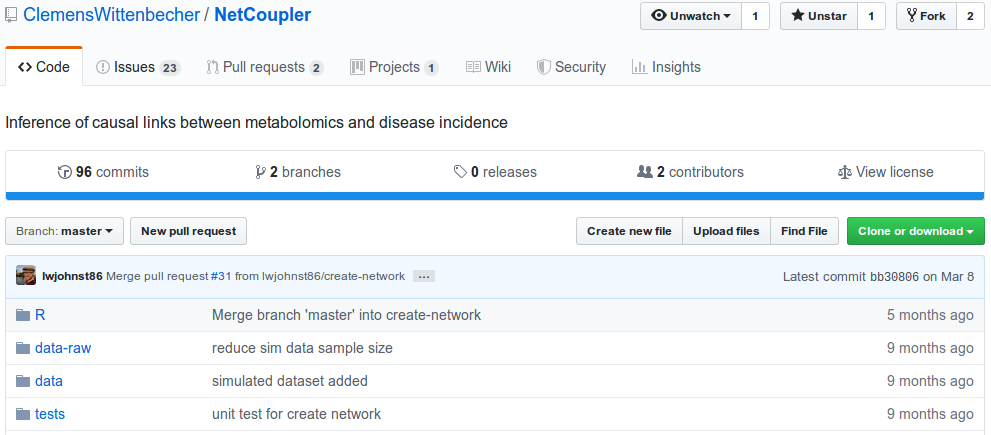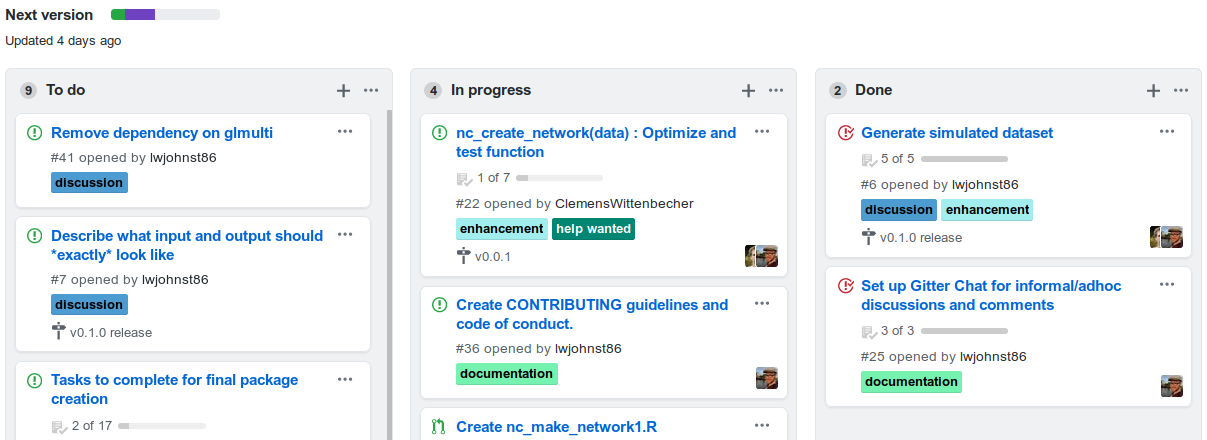Analyzing high dimensional metabolic data in epidemiological studies
Luke Johnston
Aarhus University

Aims:
Describe NetCoupler
Get feedback and/or comments on it

Aims:
Describe NetCoupler
Get feedback and/or comments on it
... and to see if I explained it well

THE PROBLEM

Modern epidemiology studies generate a lot of metabolic data
-omics type data
Metabolic biomarkers
High dimensionality
Complex networks
Like metabolomics, fatty acid panels.
Classic epidemiology meaning having an exposure with an output

"Traditional" analysis may use: Dimensionality reduction

This has the advantage of making things simpler while trying to maximize variance in the data. Afterward you can do modelling on each principal component. The disadvantage of this approach is that it loses a lot of information since the interdependence and connections between variables it not maintained.

"Traditional" analysis may use: Many regression-type models
O1 = M1 + covariatesO1 = M2 + covariates...O1 = M7 + covariatesO1 = M8 + covariatesSome ways you might go about analyzing this data is by running many regression models, one for each metabolic variable for instance.
This of course has problems since you're simply running a bunch of models and not taking account of the inherent interdependencies between variables.

"Traditional" analysis may use: Network analysis
This approach is nice in that you can extract information about the connection between metabolic variables. But there is no way to incorporate the disease outcome with this approach and in order to construct the network properly most methods require you provide a prespecified base network, which you might not know.

So, what if we...
- want info about network structure?

So, what if we...
- want info about network structure?
- don't know the network structure?

So, what if we...
- want info about network structure?
- don't know the network structure?
- have an exposure, metabolites, and outcome?

So, what if we...
- want info about network structure?
- don't know the network structure?
- have an exposure, metabolites, and outcome?
- are interested in causal links?

What if we want to know something like this?

THE SOLUTION

NetCoupler: A "causal structure learning" algorithm that...
Finds most likely network structure
Allows inclusion of exposure and outcome
Identifies causal links between and within network
NetCoupler was developed by Clemens Wittenbecher.

Algorithm (steps) used in NetCoupler

1. DAG skeleton of network is estimated

2. Initial links formed on exposure-side

3. Direct effects estimated between exposure and network

4. Repeat identifying links, find ambiguous, delete indirect links
If you were interested in linkages with an exposure on the network, you could stop here.

5. Initial links formed with outcome-side

6. Direct effects estimated between network and outcome

7. Repeat identifying links, delete indirect links, find ambiguous
You could stop here if you were interested in linkages with the network and an outcome.

8. (optional) Combine both estimations into joint model

Infer (potentially) causal pathways with graphical model

OUR WORK

Current state of NetCoupler
- Series of R scripts

Current state of NetCoupler
Series of R scripts
Only uses specific methods
- Greats well on Clemens' computer
Not readily re-usable by others
PC-algorithm for network
- Cox for modelling
- Not easily extensible to other models

Converting to a usable R package


Converting to a usable R package

We've got to improve on the underlying implementation, optimize the code for better speed and performance, fix up the interface so that other methods can be used like regression or mixed models, and reduce some software dependencies since right now it relies on software that is really hard to install and get working.

Goals:
- Submit to CRAN[1]

Goals:
Submit to CRAN[1]
Create simple interface to use

Goals:
Submit to CRAN[1]
Create simple interface to use
Create website with documentation

Goals:
Submit to CRAN[1]
Create simple interface to use
Create website with documentation
Develop tutorials
[1] CRAN distributes R packages.
